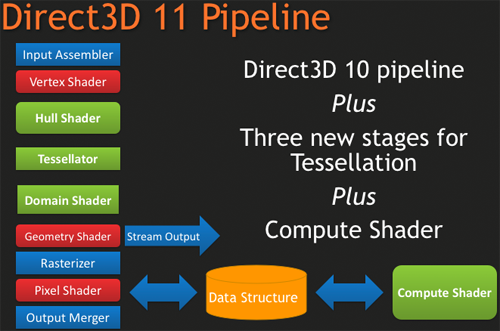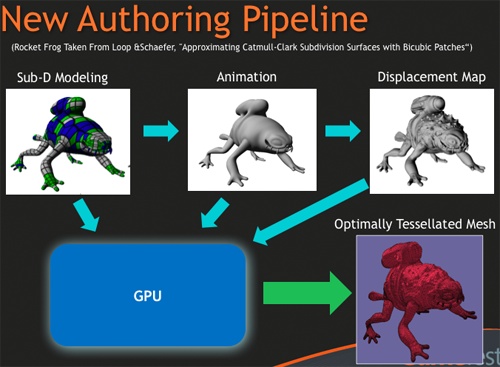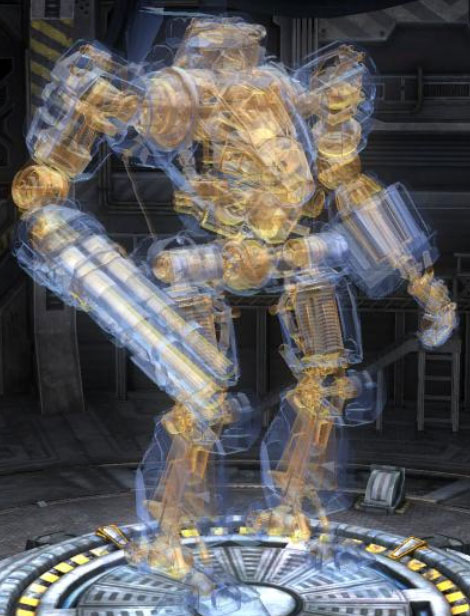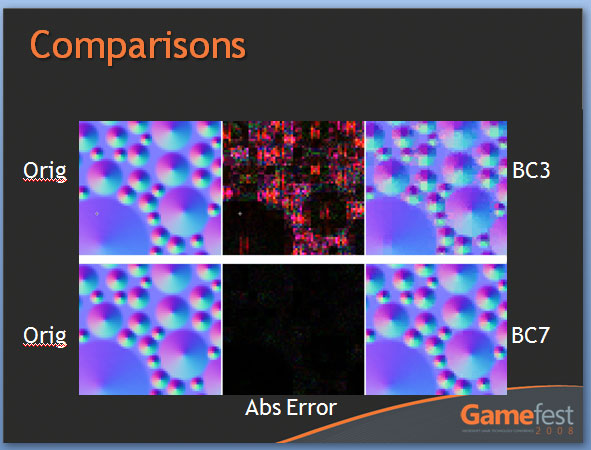AMD's Radeon HD 5870: Bringing About the Next Generation Of GPUs
by Ryan Smith on September 23, 2009 9:00 AM EST- Posted in
- GPUs
DirectX11 Redux
With the launch of the 5800 series, AMD is quite proud of the position they’re in. They have a DX11 card launching a month before DX11 is dropped on to consumers in the form of Win7, and the slower timing of NVIDIA means that AMD has had silicon ready far sooner. This puts AMD in the position of Cypress being the de facto hardware implementation of DX11, a situation that is helpful for the company in the long term as game development will need to begin on solely their hardware (and programmed against AMD’s advantages and quirks) until such a time that NVIDIA’s hardware is ready. This is not a position that AMD has enjoyed since 2002 with the Radeon 9700 and DirectX 9.0, as DirectX 10 was anchored by NVIDIA due in large part to AMD’s late hardware.
As we have already covered DirectX 11 in-depth with our first look at the standard nearly a year ago, this is going to be a recap of what DX11 is bringing to the table. If you’d like to get the entire inside story, please see our in-depth DirectX 11 article.
DirectX 11, as we have previously mentioned, is a pure superset of DirectX 10. Rather than being the massive overhaul of DirectX that DX10 was compared to DX9, DX11 builds off of DX10 without throwing away the old ways. The result of this is easy to see in the hardware of the 5870, where as features were added to the Direct3D pipeline, they were added to the RV770 pipeline in its transformation into Cypress.

New to the Direct3D pipeline for DirectX 11 is the tessellation system, which is divided up into 3 parts, and the Computer Shader. Starting at the very top of the tessellation stack, we have the Hull Shader. The Hull Shader is responsible for taking in patches and control points (tessellation directions), to prepare a piece of geometry to be tessellated.
Next up is the tesselator proper, which is a rather significant piece of fixed function hardware. The tesselator’s sole job is to take geometry and to break it up into more complex portions, in effect creating additional geometric detail from where there was none. As setting up geometry at the start of the graphics pipeline is comparatively expensive, this is a very cool hack to get more geometric detail out of an object without the need to fully deal with what amounts to “eye candy” polygons.
As the tesselator is not programmable, it simply tessellates whatever it is fed. This is what makes the Hull Shader so important, as it’s serves as the programmable input side of the tesselator.
Once the tesselator is done, it hands its work off to the Domain Shader, along with the Hull Shader handing off its original inputs to the Domain Shader too. The Domain Shader is responsible for any further manipulations of the tessellated data that need to be made such as applying displacement maps, before passing it along to other parts of the GPU.

The tesselator is very much AMD’s baby in DX11. They’ve been playing with tesselators as early as 2001, only for them to never gain traction on the PC. The tesselator has seen use in the Xbox 360 where the AMD-designed Xenos GPU has one (albeit much simpler than DX11’s), but when that same tesselator was brought over and put in the R600 and successive hardware, it was never used since it was not a part of the DirectX standard. Now that tessellation is finally part of that standard, we should expect to see it picked up and used by a large number of developers. For AMD, it’s vindication for all the work they’ve put into tessellation over the years.
The other big addition to the Direct3D pipeline is the Compute Shader, which allows for programs to access the hardware of a GPU and treat it like a regular data processor rather than a graphical rendering processor. The Compute Shader is open for use by games and non-games alike, although when it’s used outside of the Direct3D pipeline it’s usually referred to as DirectCompute rather than the Compute Shader.
For its use in games, the big thing AMD is pushing right now is Order Independent Transparency, which uses the Compute Shader to sort transparent textures in a single pass so that they are rendered in the correct order. This isn’t something that was previously impossible using other methods (e.g. pixel shaders), but using the Compute Shader is much faster.

Other features finding their way into Direct3D include some significant changes for textures, in the name of improving image quality. Texture sizes are being bumped up to 16K x 16K (that’s a 256MP texture) which for all practical purposes means that textures can be of an unlimited size given that you’ll run out of video memory before being able to utilize such a large texture.
The other change to textures is the addition of two new texture compression schemes, BC6H and BC7. These new texture compression schemes are another one of AMD’s pet projects, as they are the ones to develop them and push for their inclusion in DX11. BC6H is the first texture compression method dedicated for use in compressing HDR textures, which previously compressed very poorly using even less-lossy schemes like BC3/DXT5. It can compress textures at a lossy 6:1 ratio. Meanwhile BC7 is for use with regular textures, and is billed as a replacement for BC3/DXT5. It has the same 3:1 compression ratio for RGB textures.
We’re actually rather excited about these new texture compression schemes, as better ways to compress textures directly leads to better texture quality. Compressing HDR textures allows for larger/better textures due to the space saved, and using BC7 in place of BC3 is an outright quality improvement in the same amount of space, given an appropriate texture. Better compression and tessellation stand to be the biggest benefactors towards improving the base image quality of games by leading to better textures and better geometry.
We had been hoping to supply some examples of these new texture compression methods in action with real textures, but we have not been able to secure the necessary samples in time. In the meantime we have Microsoft’s examples from GameFest 2008, which drive the point home well enough in spite of being synthetic.

Moving beyond the Direct3D pipeline, the next big feature coming in DirectX 11 is better support for multithreading. By allowing multiple threads to simultaneously create resources, manage states, and issue draw commands, it will no longer be necessary to have a single thread do all of this heavy lifting. As this is an optimization focused on better utilizing the CPU, it stands that graphics performance in GPU-limited situations stands to gain little. Rather this is going to help the CPU in CPU-limited situations better utilize the graphics hardware. Technically this feature does not require DX11 hardware support (it’s a high-level construct available for use with DX10/10.1 cards too) but it’s still a significant technology being introduced with DX11.
Last but not least, DX11 is bringing with it High Level Shader Language 5.0, which in turn is bringing several new instructions that are primarily focused on speeding up common tasks, and some new features that make it more C-like. Classes and interfaces will make an appearance here, which will make shader code development easier by allowing for easier segmentation of code. This will go hand-in-hand with dynamic shader linkage, which helps to clean up code by only linking in shader code suitable for the target device, taking the management of that task out of the hands of the coder.










327 Comments
View All Comments
Ryan Smith - Wednesday, September 23, 2009 - link
We do have Cyberlink's software, but as it uses different code paths, the results are near-useless for a hardware review. Any differences could be the result of hardware differences, or it could be that one of the code paths is better optimized. We would never be able to tell.Our focus will always be on benchmarking the same software on all hardware products. This is why we bent over backwards to get something that can use DirectCompute, as it's a standard API that removes code paths/optimizations from the equation (in this case we didn't do much better since it was a NVIDIA tech demo, but it's still an improvement).
DukeN - Wednesday, September 23, 2009 - link
I have one of these and I know it outperforms the GTX 280 but not sure what it'd be like against one of these puppies.dagamer34 - Wednesday, September 23, 2009 - link
I need my bitstream Dolby Digital TrueHD/DTS HD Master Audio bistreaming codecs!!! :)ew915 - Wednesday, September 23, 2009 - link
I don't see this beating the GT300 as for so it should beat the GTX295 by a great margin.tamalero - Wednesday, September 23, 2009 - link
dood, you forgot the 295 is a DUAL CHIP?SiliconDoc - Wednesday, September 23, 2009 - link
roflmao - Gee no more screaming the 4850x2 and the 4870x2 are best without pointing out the two gpu's needed to get there.--
Nonetheless, this 5870 is EPIC FAIL, no matter what - as we see the disappointing numbers - we all see them, and it's not good.
---
Problem is, Nvidia has the MIMD multiple instructions breakthrough technology never used before that according to reports is an AWESOME advantage, lus they are moving to DDR5 with a 512 bit bus !
--
So what is in the works is an absolute WHOMPING coming down on ati that BIG GREEN NVIDIA is going to deliver, and the poor numbers here from what was hoped for and hyped over (although even PREDICTED by the red fan Derek himself in one portion of one sorrowful and despressed sentence on this site) are just one step closer to that nail in the coffin...
--
Yes I sure hope ati has something major up it's sleeve, like 512 bit mem bus increased card coming, the 5870Xmem ...
I find the speculation that ATI "mispredicted" the bandwidth needs to be utter non-sense. They are 2-3 billion in the hole from the last few years with "all these great cards" they still lose $ on every single sale, so they either cannot go higher bit width, or they don't want to, or they are hiding it for the next "strike at NVidia" release.
erple2 - Friday, September 25, 2009 - link
So you're comparing this product with a not yet release product and saying that the not yet released product is going to trounce it, without any facts to back it up? Do you have the hardware? If not, then you're simply ranting.Will the GT300 beat out the 5870? I dunno, probably. If it didn't, that would imply that the move from GT200 to GT300 was a major disappointment for NVidia.
I think that EPIC FAIL is completely ludicrous. I can see "epic fail" applied to the Geforce FX series when it came out. I can also see "epic fail" for the Radeon MAXX back in the day. But I don't see the 5870 as "epic fail". If you look at the card relative to the 4870 (the card it replaces), it's quite good - solid 30% increase. That's what I would expect from a generation improvement (that's what the gt200's did over the 9800's, and what the 8800 did over the 7900, etc).
BTW, I'm seeing the 5870 as pretty good - it beats out all single card NVidia by a reasonable and measureable amount. Sounds like ATI has done well. Or are you considering anything less than 2x the performance of the NVidia cards "epic fail"? In that case, you may be disappointed with the GT300, as well. In fact, I'll say that the GT300 is a total fail right now. I mean jeez! It scores ZERO FPS in every benchmark! That's super-epic fail. And I have the numbers to back that statement up.
Since you are making claims about the epic fail nature of the 5870 based on yet to be released hardware, I can certainly play the same game, and epic fail anything you say based on those speculative musings.
SiliconDoc - Monday, September 28, 2009 - link
Well the GT200 was 60.96% increase average. AT says so.http://www.anandtech.com/video/showdoc.aspx?i=3334...">http://www.anandtech.com/video/showdoc.aspx?i=3334...
So, I guess ati lost this round terribly, as NVidia's last just beat them by more than double your 30%.
Great, EPIC FAIL is correct, I was right, and well...
Finally - Wednesday, September 23, 2009 - link
Team Green foames out of their mouthes. It's funny to watch.SiliconDoc - Wednesday, September 23, 2009 - link
Glad you are having fun.Just let me know when you disagree, and why. I'm certain your fun will be "gone then", since reality will finally take hold, and instead of you seeing foam, I'll be seeing drool.